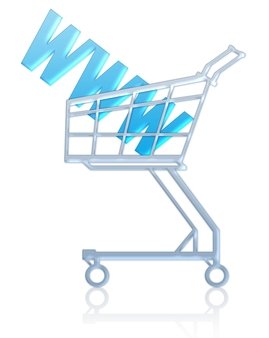 Are you ready to start “domaining” – buying and selling domains to make a profit? Then you have to buy some domains. Here are the five types of places you can go to buy domains.
Are you ready to start “domaining” – buying and selling domains to make a profit? Then you have to buy some domains. Here are the five types of places you can go to buy domains.
- Domain backorder services. According to the domain trading experts at Protrada, 36 million domain names expire each year, and domain backorder sites are where you can snatch them up. A backorder service lets you place an order that goes through only if the domain expires. You set the price you’d be willing to pay if the domain becomes available. If no one else orders, it’s yours. If multiple people order, it goes into an auction.
- Domain auction services. Multiple potential buyers will bid on a domain, and the highest bidder wins. Reputable services allow buyers and sellers to leave feedback, similar to Ebay.com.
- Domain listing services. In its free e-book, Domaining 101, Protrada recommends that new domainers stay away from this source, explaining that backorder services and auction services offer wholesale prices, while listing services sell to end users. Because end users typically plan to inhabit the domains for the long term, domain prices are higher. Go to a listing service, and you’ll probably pay more than you need to for a domain.
- Domain forums. Forums are a community of domain owners, buyers and sellers. In this scenario, you’ll typically be buying domains directly from the domain’s owner.
- Buy directly from domain owners. See a domain you like? Run a WHOIS search for free and you’ll be able to find the owner’s contact information. Reach out and see if he or she is willing to sell. This is a good approach if the domain is in a niche you’re sure you can monetize for monthly revenue.
Remember to look at the registration dates on any domains you’re considering buying. Younger domains are worth less, and you should price your bid accordingly.
Dropped domains are an excellent buying opportunity. When you buy a domain, it’s not a once-in-a-lifetime purchase. Instead, you buy the rights to the domain for a certain period of time that you choose, such as one, 2 or 10 years. The expiration date is listed in the WHOIS data for that domain.
When the expiration date passes, most registrars offer a grace period. During this time, you can pay your renewal fee to maintain control of the domain.
At the end of the grace period, the domain name enters the redemption grace period. Any websites and email addresses associated with the domain will cease to function, but you can still pay to regain control.
When this period is up, the domain shows up as “pending delete” and becomes available for backorders. If you’ve backordered a domain, this is when you’ll get notice of its availability and be able to bid for it if others also have placed backorders. If no one has backordered the domain, it reverts back to “wild” status and you can register it as normal.
One final tip: Set a monthly budget for what you can afford to spend on domains. This can help to ensure that you don’t spend more on a domain than you can afford to lose.
Source: Domaining 101, a free e-book from Protrada. Download your copy here: http://www.protrada.com/
Comments
Powered by Facebook Comments


